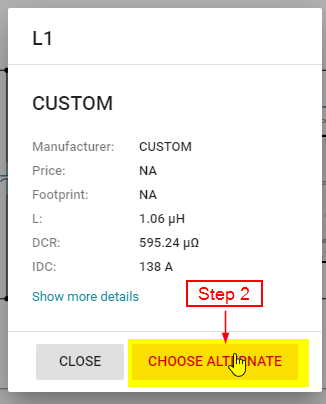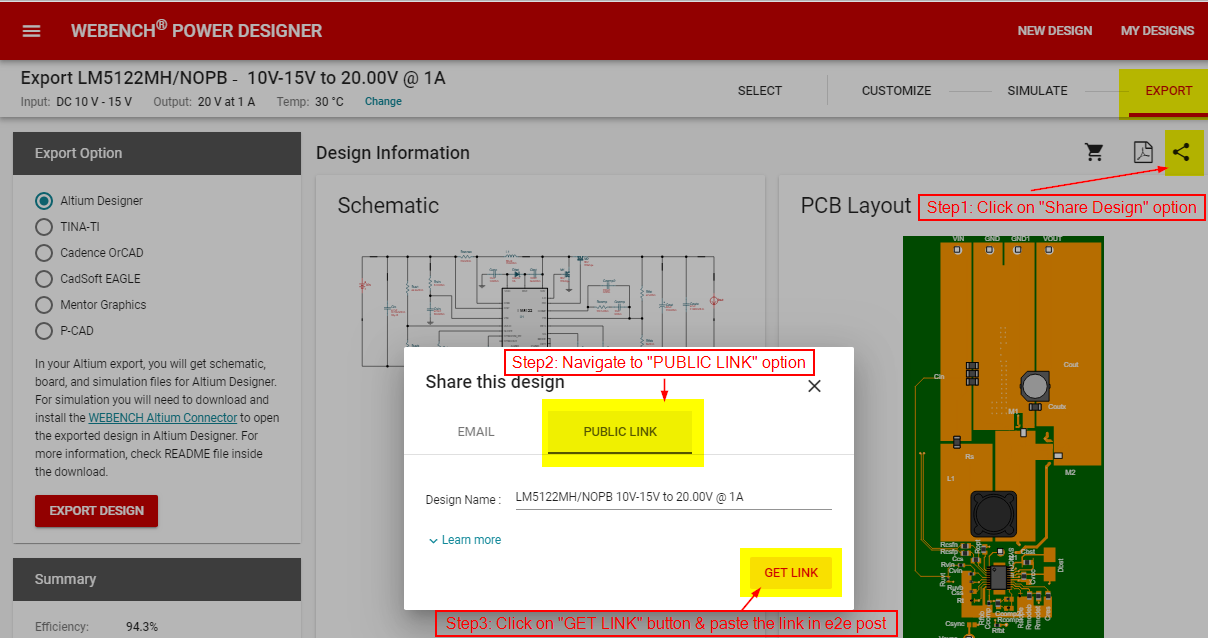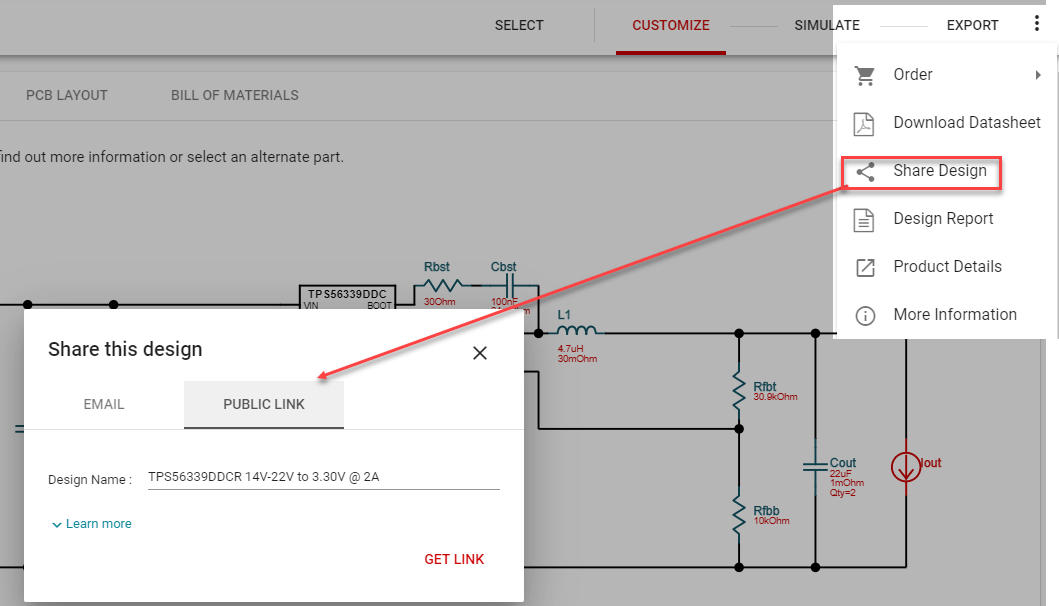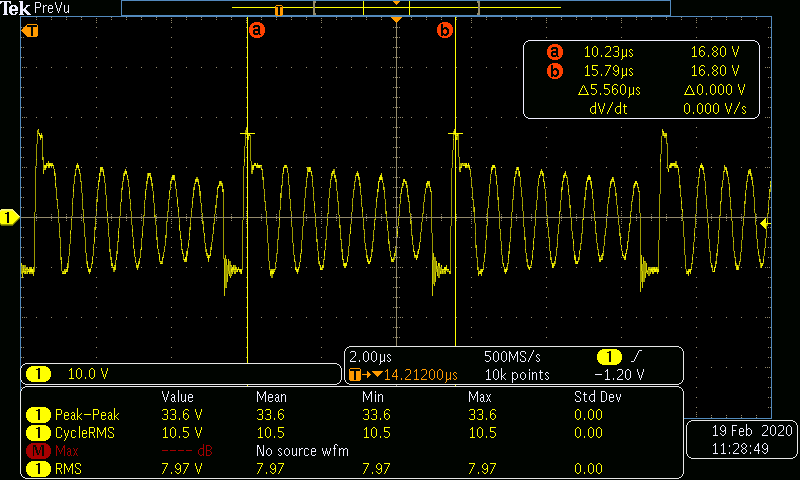Other Parts Discussed in Thread: LM5170
Tool/software: WEBENCH® Design Tools
Looking to design 12V - 48V Boost converter using the LM5122MH/NOPB. The current needs to be 20A max but I get error from Webench stating current exceeds limit. Is there a way around this in simulation so I can get the design I need? I specified my range of input voltages between 20V and 30V. I am planning to run two 350W electric motors using this boost converter. Thanks.







